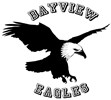Code of Conduct

Code of Conduct - Updated June 2024
Bayview Elementary Code of Conduct
Purpose
To encourage the development of socially responsible behaviour resulting in a positive reputation for students and the school community.
To foster a safe, respectful and welcoming learning environment for all students, staff and parents.
To clearly communicate behavioural expectations to the school community.
Bayview has a set of guidelines for conduct and expectations that make up the three Care Statements: Be Safe, Be Fair, Be Kind. These guidelines reflect the school's philosophy creating a safe, caring, mutually respectful and welcoming learning environment. Research shows that children who are socially and emotionally healthy are the best learners; children who display positive social-emotional traits are successful in school.
These expectations apply to behaviour at school, during school-organized or sponsored activities, and behaviour beyond these times (including on-line behaviour) that negatively impacts the safe, caring or orderly environment of the school, and/or student learning.
Conduct Expectations
Acceptable Conduct (see Code of Conduct below)
Respecting self, others, and the school
Contributing to a safe, caring, positive, inclusive, and peaceful environment
Seeking to prevent violence and potentially violent situations, and demonstrating social responsibility by reporting such situations
Engaging in purposeful learning activities
Unacceptable Conduct
Students shall not discriminate against others on the basis of the race, religion, colour, ancestry, place of origin, marital status, family status, age, sex or sexual orientation, gender identity/expression, or physical or mental disability, or for any other reason set out in the Human Rights Code of British Columbia, nor shall a student publish or display anything that would indicate an intention to discriminate against another, or expose them to contempt or ridicule, on the basis of any such grounds.
Racism and discrimination will not be tolerated in our school.
Behaviours that interfere with the learning of other, interfere with an orderly environment, or create an unsafe environment
Acts of bullying, harassment, intimidation, or physical violence
Illegal acts, such as possession, use or distribution of illegal or restricted substances
Theft or damage to property
Note: Behaviours (both acceptable and unacceptable) cited in the code of conduct are examples only and not an all-inclusive list.
Rising Expectations
Students are expected to learn and mature as they move through successive grades, and as such the expectations progress towards increasing personal responsibility and self-discipline, as well as increasing consequences for inappropriate conduct/unacceptable behavior.
Retaliation Prevention
All reasonable steps will be taken to prevent retaliation against a student who has made a complaint of a breach of a code of conduct.
Consequences
Disciplinary action, wherever possible, is restorative rather than merely punitive. The school will treat seriously any behaviour that discriminates based on Indigenous identity, race, religion, colour, ancestry, place of origin, marital status, family status, age, sex or sexual orientation, gender identity/expression, or physical or mental disability.
Repetitive or severe unacceptable behaviour may result in increased severity of subsequent disciplinary action. The age and maturity of students are considered when determining appropriate consequences.
Special considerations may apply to students with special/diverse needs if these students are unable to comply with a code of conduct due to having a disability/challenge of an intellectual, physical, sensory, emotional, or behavioural nature.
Responses to unacceptable conduct are consistent and fair.
Students, as often as possible, are encouraged to participate in the development of meaningful consequences for violations of the established code of conduct.
Notifications
The principal or designate has a responsibility to inform other parties of serious breaches of the code of conduct. These parties include:
Parent(s) of student offender(s) and parent(s) of student victim(s) – in every instance
School district officials
Police and/or other agencies, as required by law
School community, when deemed necessary, to reassure members that school officials are taking appropriate action
Suspensions
In accordance with the School Act, Sec. 85 (2) (ii) and (d), the Board authorizes the principal or designate of any school in the district to suspend a student from attendance at school for up to five days.
Suspensions may be for the following reasons:
because a student is willfully and repeatedly disrespectful to a teacher or to any other employee of the Board carrying out responsibilities approved by the Board;
because the behaviour of the student breaches the District Code of Conduct or other policy and/or has a harmful effect on others or the learning environment of the school;
because the student has failed to comply with the School Code of Conduct.
Suspensions over five days are made in consultation with the appropriate Director of Instruction as per District Student Code of Conduct, AP 350.
As per AP 350 7.7 an educational program must be provided.
Family Involvement
Bayview’s Code of Conduct was established to ensure each child and staff members’ safety. We ask for student and parental support in honouring our commitment to ensuring the safest learning environment for all.
Parents can help in the following ways:
1. Discuss the Code of Conduct with your child. Find ways to practice how to be safe, fair, and kind at home and in the community.
2. Be in close contact with your child’s teacher -- e-mail or phone them with any concerns.
3. Questions? Please email Ms. Biorn at bbiorn@vsb.bc.ca or phone the school at 604-713-5433.
Code of Conduct Last Reviewed October, 2022

